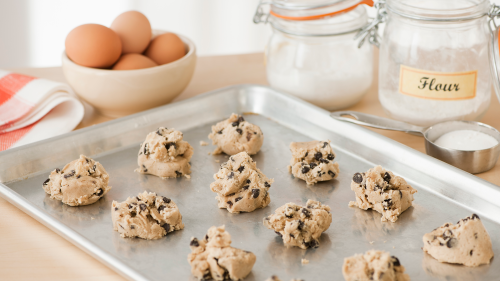Español
You may not realize it, but most flour is a raw food. & it hasn’t been treated to kill any bacteria (germs) it may contain. Cooking & baking is what kills any bacteria in flour, as well as in raw eggs that are often used with it.
To stay safe, don’t eat or taste raw (uncooked) flour, dough or batter. Also, don’t let children use raw dough for crafts or “play clay.” Even if children don’t eat the dough, they may put their hands in their mouth after handling it.
Flour Facts
If you knew about the dangers of eating raw meat, poultry or eggs & didn’t know about flour, you’re not alone.
Most people in the U.S. don’t think raw flour is risky to eat, according to a 2019 U.S. Food & Drug Administration survey.
But it could make you sick. Over the years, the FDA & the Centers for Disease Control & Prevention have investigated several outbreaks of foodborne illness (food poisoning) involving raw flour or products that contain flour, like cake mixes & cookie dough. In those investigations, either the bacteria Salmonella or Escherichia coli (E. coli) caused food poisoning, which can have mild to serious symptoms.
How does bacteria get into flour? The flours most used for baking & cooking at home are made directly from raw grains. They can be exposed to bacteria in the field or when the flour is being made. Grains are harvested, ground & sometimes bleached, but processing raw grains into flour does not kill bacteria.
Flour Safety Tips & Other Resources
Both the FDA & the CDC have for years reminded people not to eat raw dough. Both agencies have helpful resources on their websites for safely using flour & eggs. Here’s a sampling of do’s & don’ts from cooking to cleanup & shopping to storing.
- Handling Flour Safely: What You Need to Know
- What You Need to Know About Egg Safety
- Say No to Raw Dough! (CDC)
- Food Safety Tips for Healthy Holidays
- Safe Food Handling
Source: FDA Consumer Updates

